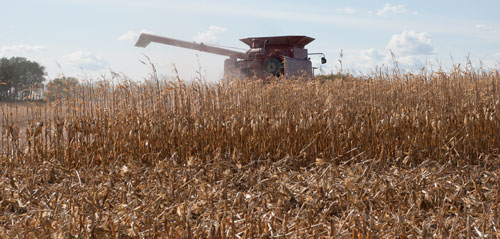
It turns out biofuel made from the stalks, leaves and cobs left over after corn harvest may not be the cleaner-than-oil alternative it was thought to be.
A study released last week in the Nature Climate Change journal showed that biofuels made with corn residue actually released 7 percent more greenhouse gases in the early years compared to conventional gasoline. Biofuels are cleaner in the long run, but researchers say they won't meet the standard to qualify as a renewable fuel set in the 2007 energy law.
These results are a slap in the face to supporters of cellulosic biofuels, which have been considered a solution to combating climate change. Despite receiving more than a billion dollars of federal support, biofuel production has not met the volume targets mandated by law. Half of the initial biofuel market is expected to come from corn residue.
This study was the first to attempt to quantify how much carbon is lost into the atmosphere when corn residue is removed to make biofuel instead of left to naturally replenish the soil with carbon. The research found that, regardless of how much or how little residue was removed, the process contributed to global warming.
Cellulosic biofuels must produce 60 percent less carbon pollution than gasoline to meet the energy law standard. If not, producers don't earn the $1-per-gallon subsidy, and refiners avoid the product because it doesn't meet their legal obligations.








